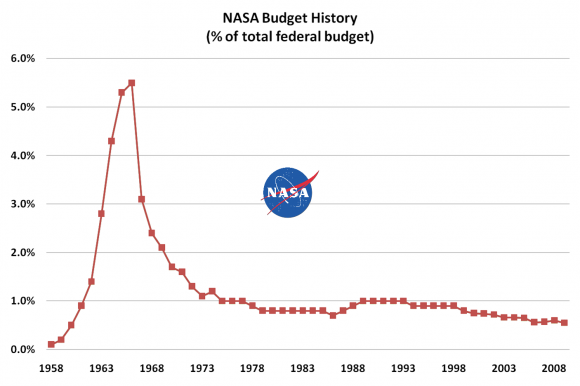“I believe that this nation should commit itself to achieving the goal, before this decade is out, of landing a man on the moon and returning him safely to the Earth.”
That quote from President John F. Kennedy’s speech to a joint session of Congress on May 25, 1961, is perhaps the most often cited example of the philosophy that when you set stretch goals, amazing things can happen. And who doesn’t want to accomplish amazing things.
So, the fact that the “R” in our smarter S.M.A.R.T. goals model stands for “realistic” may be surprising. Realistic sounds so safe … run-of-the-mill … even boring. Don’t we want bigger, inspiring, stretch goals? Maybe even “B.H.A.G.s”?
Even if you haven’t read the best-selling business book Built to Last by Jim Collins and Jerry Porras, you’ve probably heard about “big, hairy, audacious goals,” or B.H.A.G.s. And the first example of a B.H.A.G. that Collins and Porras cited in their explanation of this concept was President Kennedy’s bold man-on-the-moon goal.
Does our suggestion that goals should be realistic mean that we believe B.H.A.G.s aren’t useful, or worse, just pipe dreams? Not at all. It simply means that to be realistic, B.H.A.G.s require B.H.A.R.s – big, hairy, audacious resources.
What Makes a Goal Realistic – or Unrealistic?
While everyone quotes the man-on-the-moon ambition in President Kennedy’s speech to Congress, the sentence immediately preceding that statement arguably was just as important: “I therefore ask the Congress, above and beyond the increases I have earlier requested for space activities, to provide the funds which are needed to meet the following national goals….”
No goal, in and of itself, is either realistic or unrealistic. Leaders need to ask one straightforward question to determine reasonableness: Can we and will we devote sufficient resources to achieving the goal?
Kennedy’s audacious moon landing goal dramatically illustrates this point. His bold challenge to put a man on the moon was both aspirational and inspirational. Its primary purpose was to rally the support of the American people and more importantly the Congress to fund the goal’s achievement. Remember that the space program at the time was a matter of national pride. We had to beat the Russians, and we were behind in the early 1960s.
 The accompanying chart illustrates how significantly resources often have to be redirected to achieve a B.H.A.G., NASA’s annual budget in 1961 when Kennedy made his bold proclamation was $744 million. By 1966 at its peak, the annual NASA budget had reached $5.9 billion, an increase of nearly 700%. As the line graph shows, the increase in the share of total federal spending for NASA in the 1960s was even more dramatic and illustrates another important point: effective planning and goal-setting is about prioritization. Resources are not unlimited so focusing time and spending in one area usually means sacrifices in others.
The accompanying chart illustrates how significantly resources often have to be redirected to achieve a B.H.A.G., NASA’s annual budget in 1961 when Kennedy made his bold proclamation was $744 million. By 1966 at its peak, the annual NASA budget had reached $5.9 billion, an increase of nearly 700%. As the line graph shows, the increase in the share of total federal spending for NASA in the 1960s was even more dramatic and illustrates another important point: effective planning and goal-setting is about prioritization. Resources are not unlimited so focusing time and spending in one area usually means sacrifices in others.
Following are three tips for setting aggressive but realistic goals that are achievable.
Recognize that not every goal can be a B.H.A.G.
Stretch goals are fine, but not every goal in every area can be a stretch. Setting aggressive goals in a few areas and devoting adequate resources to achieving them is better than spreading resources too thinly. Keep in mind that stretch goals that are not provided appropriate resources can shift from inspirational to demoralizing for those involved.
A stretch for one unit may be a cake-walk for another
Organization-wide goals for quality, safety or service metrics may be reasonable, but leaders often need to analyze and adjust them to be realistic for individual units. This is especially true for patient experience goals. It is fine to set a goal of reaching the 75th percentile rank for a unit that has been at the 60th percentile. But for another unit at the 25th percentile with a more challenging patient population, that goal in a single year would be extremely difficult.
Industry data helps determine the resources required to hit a goal
In some areas, using industry benchmark data can help teams assess just how challenging the achievement of a goal will be. For example, patient satisfaction research companies can tell you how many hospitals, on average, were able to move performance by specific amounts depending on their starting points.
Linking the allocation of resources to the achievement of stretch goals is essential. Well-intentioned “inspirational” goals quickly become disheartening for teams that are hampered by too few resources to achieve them.
